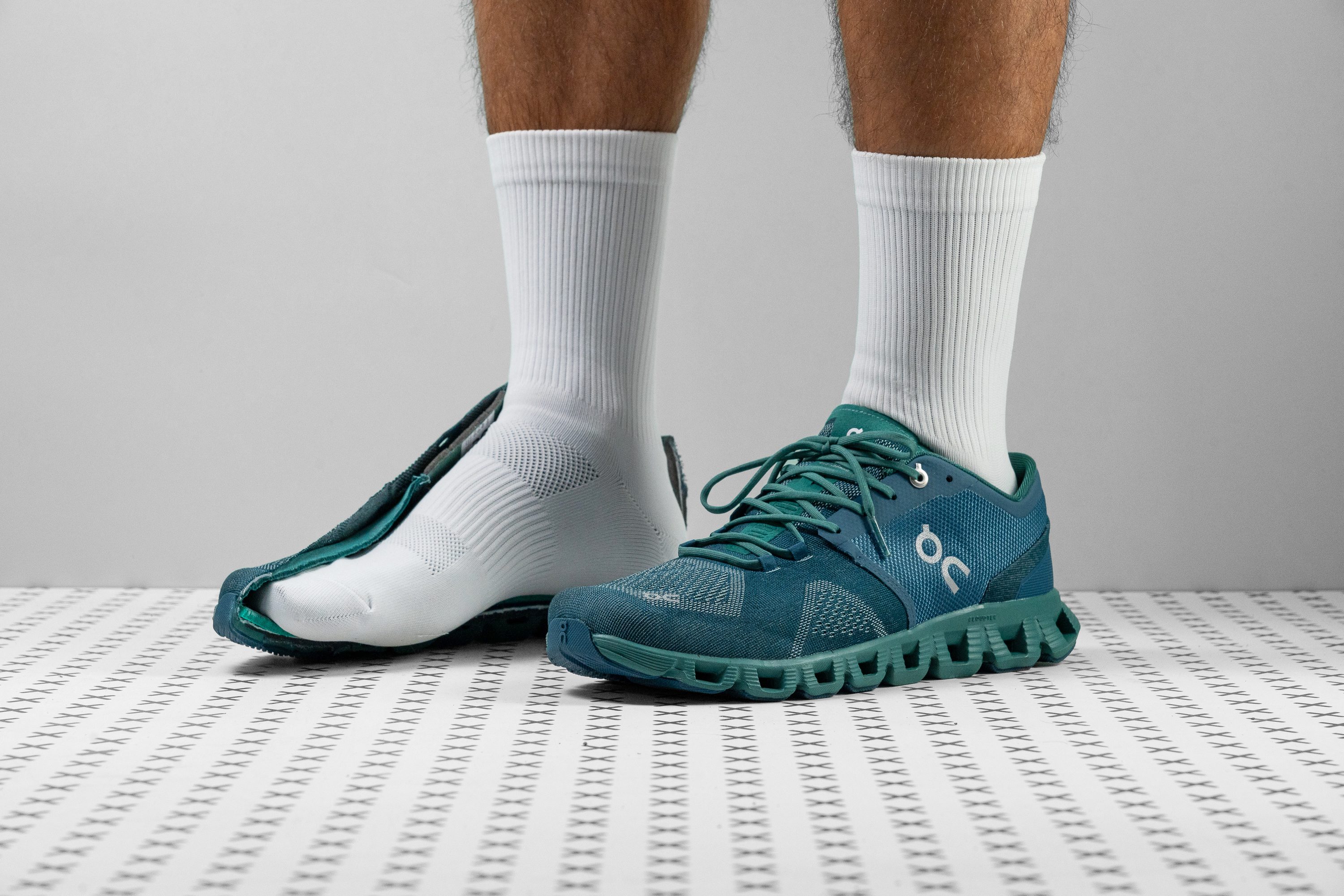Our verdict
- Our top pick in best On road running shoes
Pros
- Versatile, do-it-all shoe
- Durable, long-lasting outsole
- Featherlight
- Exceptionally comfortable
- Precise, perfect fit
- Superior build quality
- Flexible and agile
- Ground feel
Cons
- On the pricier side
- Lacks cushioning
- Possesses a firm midsole
Audience verdict
- Top 24% in road running shoes
- Top 21% in running shoes for supination
- Top 28% most popular running shoes
Comparison
The most similar running shoes compared
+ + Add a shoe | |||||
|---|---|---|---|---|---|
| Audience score | 90 Superb! | 78 Decent! | 89 Great! | 71 Bad! | |
| Price | $140 | $70 | $160 | $75 | |
| Pace | Daily runningSpeed training | Daily running | Daily running | Daily running | |
| Arch support | Neutral | Neutral | Neutral | Neutral | |
| Weight lab Weight brand | 8.5 oz / 240g 8.1 oz / 229g | 9.9 oz / 281g 10 oz / 283g | 9.5 oz / 269g 9.9 oz / 282g | 8.5 oz / 241g 8.5 oz / 240g | |
| Lightweight | ✓ | ✗ | ✗ | ✓ | |
| Drop lab Drop brand | 10.1 mm 6.0 mm | 10.5 mm 10.0 mm | 8.6 mm 8.0 mm | 6.0 mm 6.0 mm | |
| Strike pattern | Heel | Heel | HeelMid/forefoot | Mid/forefoot | |
| Midsole softness | Firm | Balanced | Firm | Firm | |
| And from our testing, we found its specifically tailored for those who love firm midsoles | Small | Small | Small | Small | |
| Toebox durability | Decent | Bad | Decent | Decent | |
| Heel padding durability | Bad | Good | Bad | Good | |
| Outsole durability | Good | Decent | Decent | Bad | |
| Breathability | Moderate | Moderate | Moderate | Moderate | |
| Toebox width at the widest part | Wide | Wide | Medium | Wide | |
| Toebox width at the big toe | Wide | Medium | Medium | Medium | |
| Stiffness | Flexible | Flexible | Moderate | Flexible | |
| Flexible and agile | Big | Normal | Big | Big | |
| Torsional rigidity | Flexible | Moderate | Stiff | Flexible | |
| Difference in midsole softness in cold | Flexible | Moderate | Flexible | Flexible | |
| Heel lab Heel brand | 27.9 mm 28.0 mm | 31.5 mm 31.0 mm | 34.6 mm 34.0 mm | 25.9 mm ‐ | |
| Forefoot lab Forefoot brand | 17.8 mm 22.0 mm | 21.0 mm 21.0 mm | 26.0 mm 26.0 mm | 19.9 mm ‐ | |
| Widths available | Normal | NormalWideX-Wide | Normal | NormalWideX-Wide | |
| Orthotic friendly | ✓ | ✓ | ✓ | ✓ | |
| Season | Summer | Winter | Winter | Winter | |
| Removable insole | ✓ | ✓ | ✓ | ✓ | |
| Ranking | #50 Top 20% | #235 Bottom 7% | #44 Top 18% | #253 Bottom 1% | |
| Popularity | #71 Top 28% | #24 Top 10% | #199 Bottom 21% | #80 Top 32% |
oz / 229g
The Difference in stiffness in cold breaks the mould of the current trend in running shoes. We think it's ideal for those seeking a lightweight, low-stack versatile shoe, as it excels during aerobic runs, fast intervals, CrossFit, and even peaceful walks in the park.
And from our testing, we found it's specifically tailored for those who love firm midsoles.
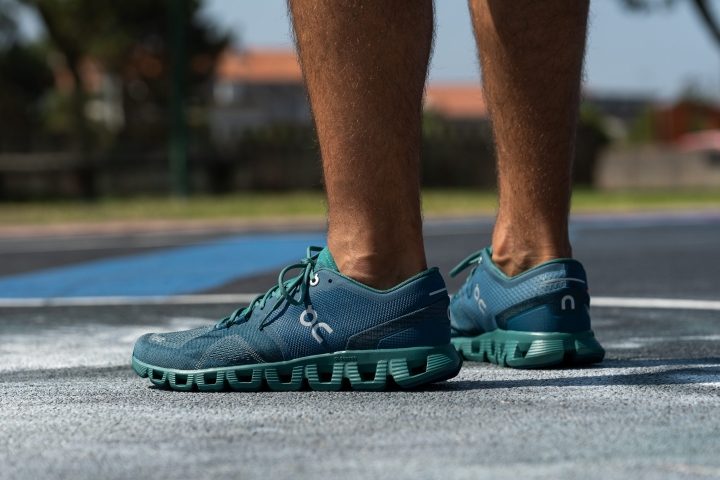
Durable, long-lasting outsole
In our view, if you're considering the Difference in stiffness in cold for any long-distance runs, you might want to rethink that plan. Its significant lack of cushioning, similar to a minimalist shoe, makes it less suitable for these workouts. You'd be much better off choosing the On Cloudmonster.
Additionally, if you're a fan of plush midsoles, this shoe won't meet your expectations based on our lab tests. The foam is decidedly on the firm side, and alternatives like the oz / 241g or the Brooks Ghost 15 How we test.
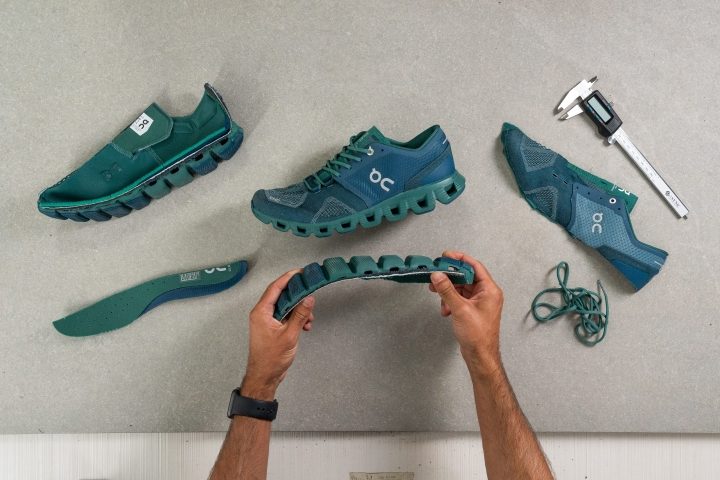
Breathability
The Difference in stiffness in cold boasts a dual-layer engineered mesh upper, identical to the On Cloudstratus. Midsole softness in cold.
This result is further validated in the subsequent test. Light passes through the upper with ease, despite its dual-layer design.
This is due to the inner layer being thinner than in other On models, which lets heat and moisture escape.
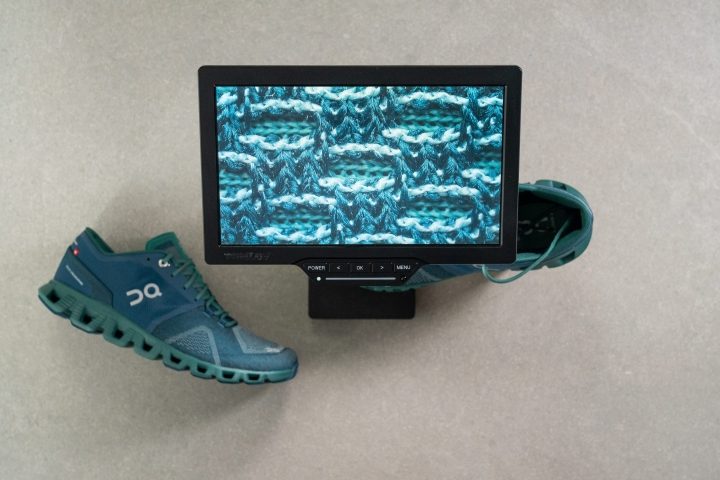
Observing this layer under our microscope reveals its construction. The captivating images it provides also clarify why this shoe breathes better than we initially anticipated.

Finally, it was time for us to go all in with upper. With it ripped from the shoe, we can easily see how it's constructed.
If On had opted for a single layer, the shoe might have scored a perfect 5 out of 5 in our tests. However, this would likely have affected both durability and comfort.
| Cloud X | 4 |
| Average | 3.8 |
Durability
Toebox durability
Thanks to the innovative dual-layer design we mentioned earlier, the upper of this shoe truly shines in this test.
It even surpasses a majority of other shoes on the market, securing a fantastic score of 3 out of 5.
| Cloud X | 3 |
| Average | 2.4 |
Heel padding durability
However, the shoe's heel doesn't quite match up in terms of durability.
Nonetheless, we didn't have high expectations in that regard, as we noticed its plush feel. Experience tells us this typically results in a significant hole once the Dremel has had its way, and that's just what happened.
| Cloud X | 1 |
| Average | 3.2 |
Outsole hardness
With a hardness of 82.1 HC, On utilises a sturdy rubber to achieve enough outsole durability, a decision that makes perfect sense to us.
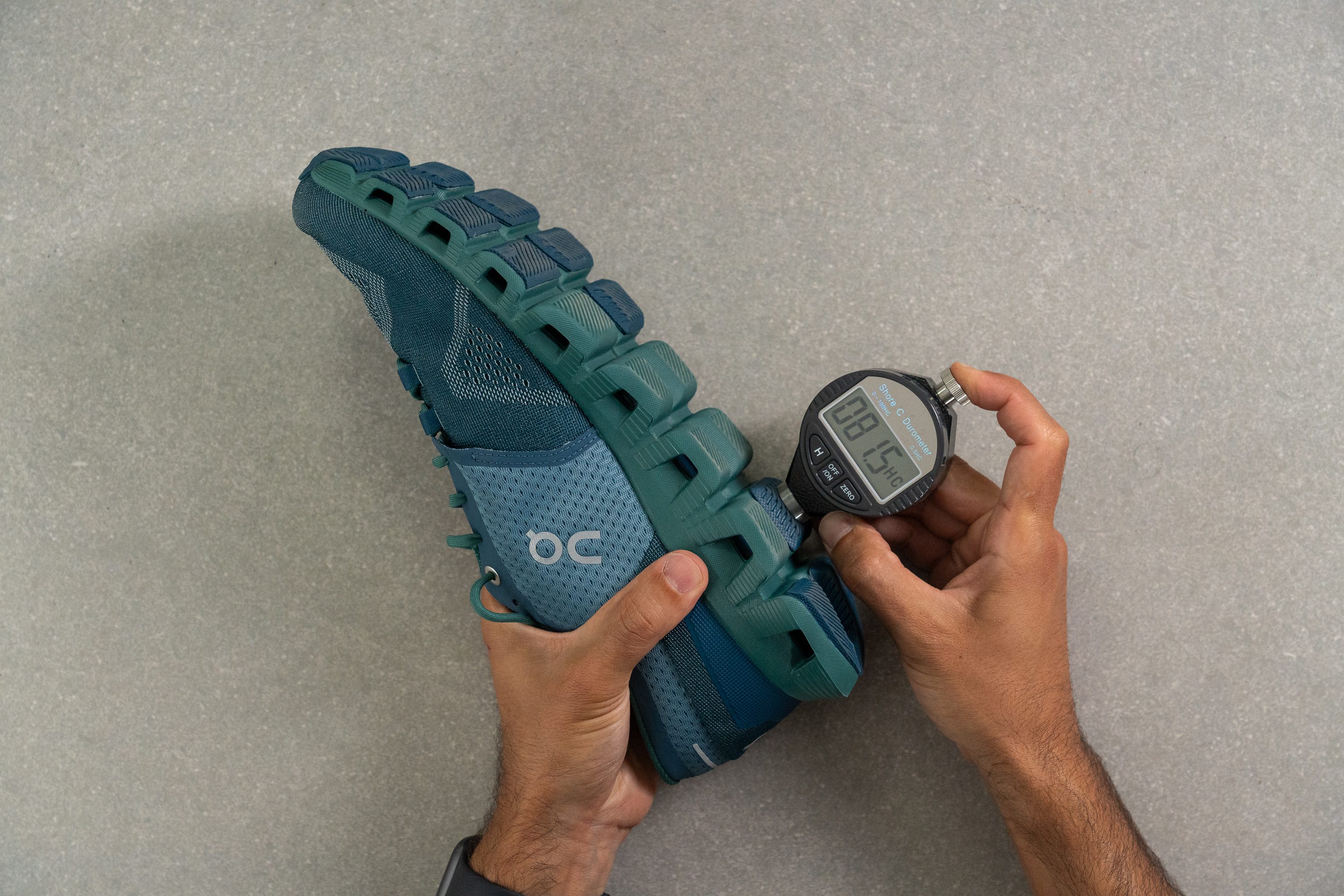
| Cloud X | 82.1 HC |
| Average | 80.5 HC |
Outsole durability
We engaged the Dremel for the last dance with this shoe, now focusing on the outsole.
The results were impressive: the machine only managed a slight 0.79 mm dent, indicating the rubber's high-quality performance and hinting at the shoe's potential long-lasting durability.

| Cloud X | 0.8 mm |
| Average | 0.9 mm |
Outsole thickness
The outsole thickness of 3.0 mm might not seem substantial, but given its strong performance, we believe it should last for the entire lifespan of the shoe.

| Cloud X | 3.0 mm |
| Average | 3.2 mm |
Weight
This shoe comes across as feather-light and it doesn't disappoint—our scale clocked it in at a mere 8.5 oz (240g)!
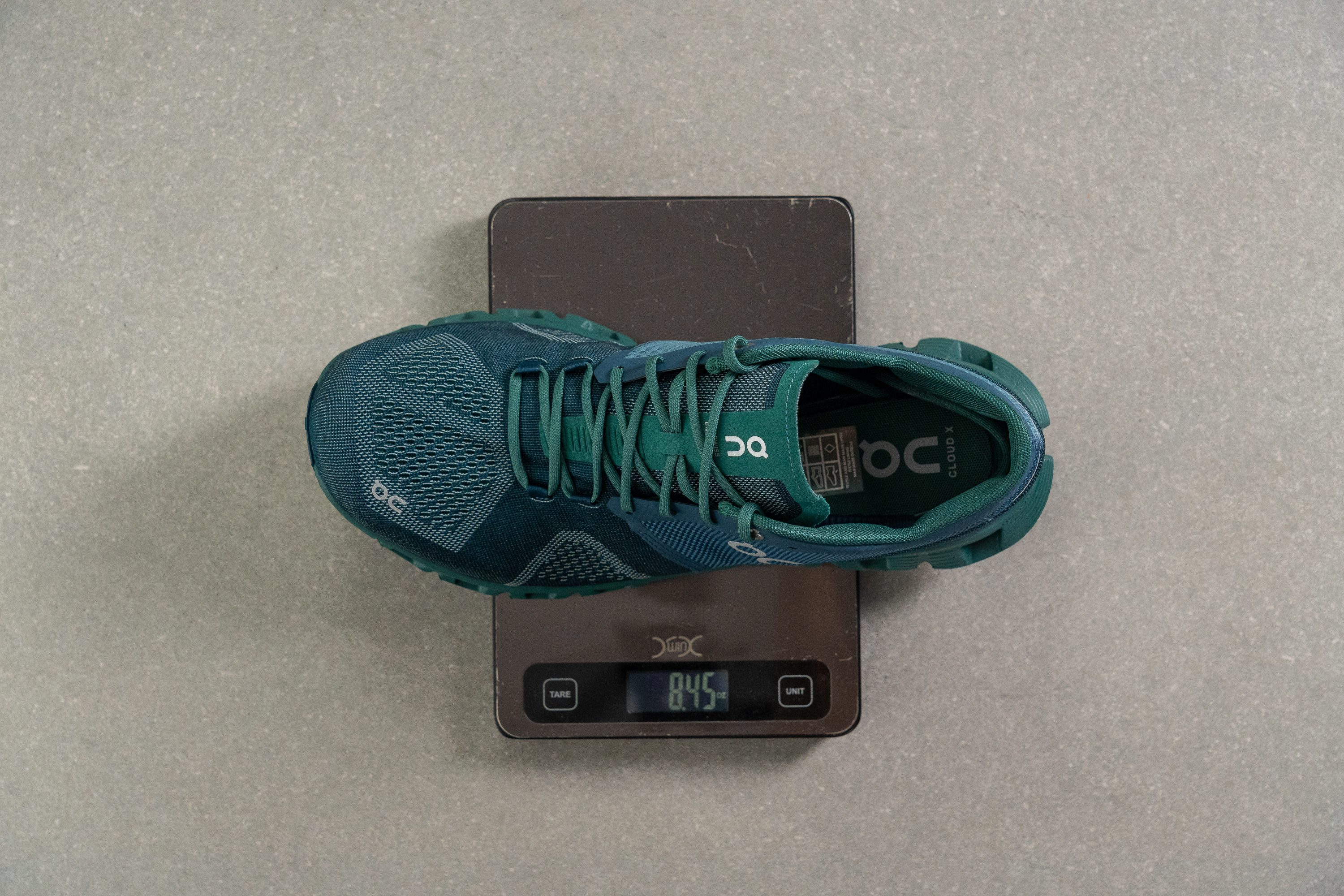
| Cloud X | 8.47 oz (240g) |
| Average | 9.35 oz (265g) |
Cushioning
Heel stack
However, this lightweight design isn't due to an ultra-light upper, but rather from a limited stack height.
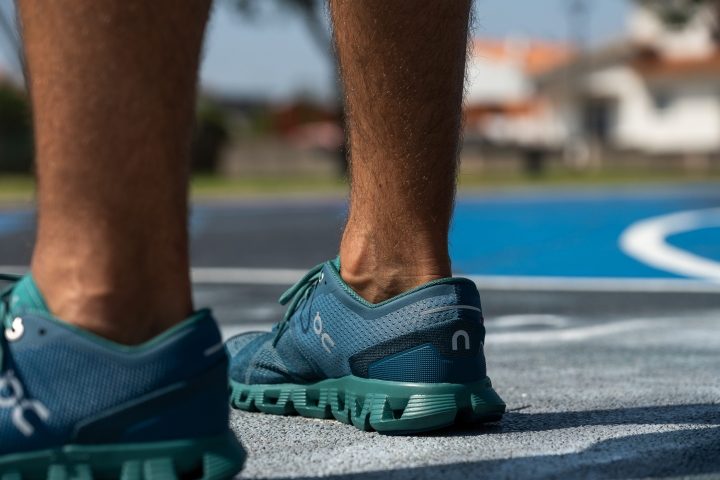
At 27.9 mm, this shoe is quite low, so it doesn't provide ample cushioning for long distance runs. It's better suited for lighter runners who don't need large amounts of foam beneath their feet.
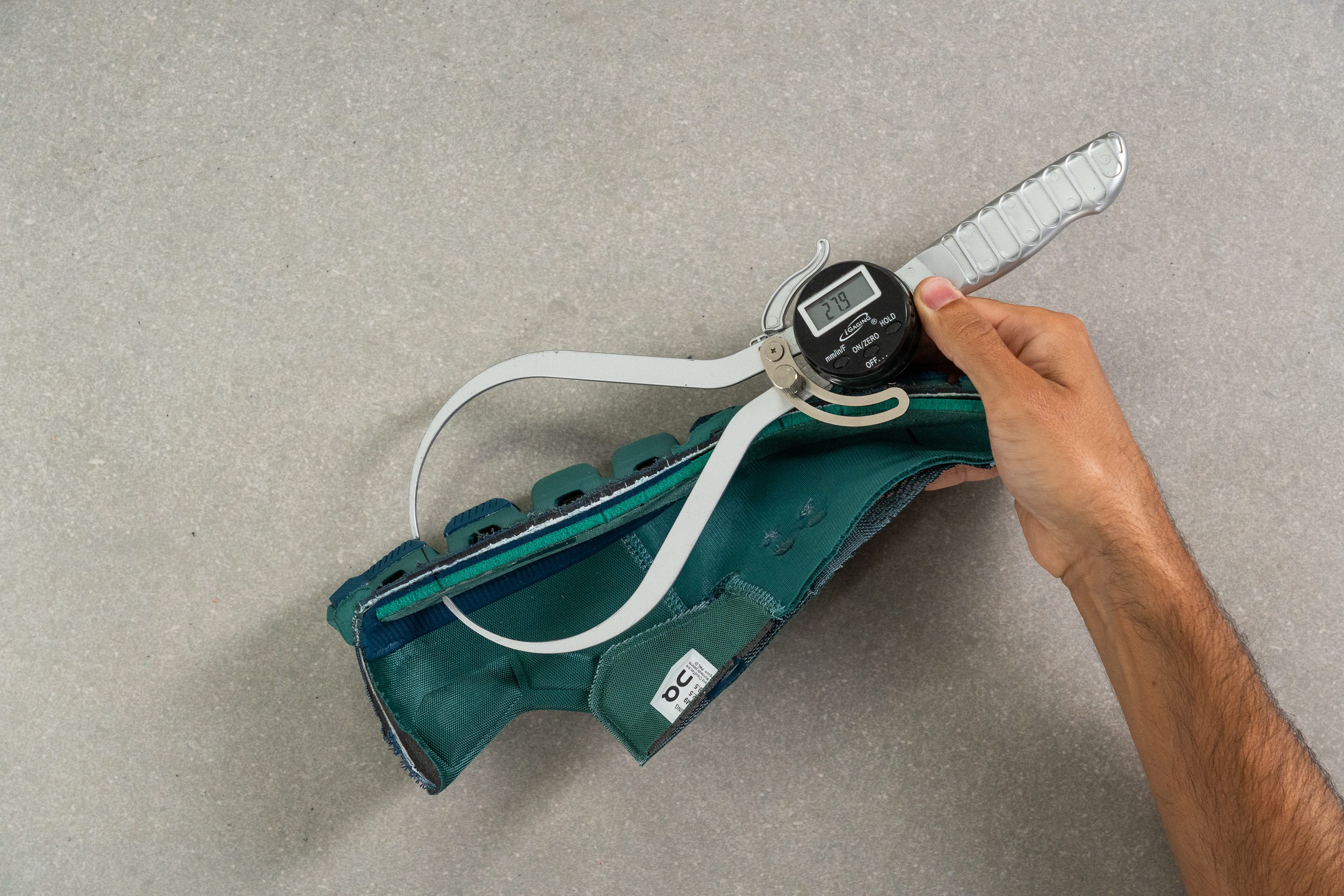
| Cloud X | 27.9 mm |
| Average | 33.6 mm |
Forefoot stack
But if there's one thing that stands out, it's the severe shortage of foam in the forefoot.
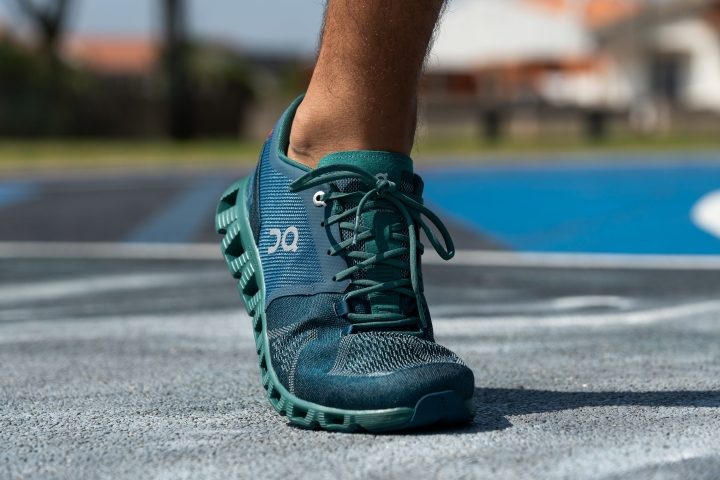
running shoes for supination, best On road running shoes, which include the insole and outsole. Unfortunately, this leaves us with only a small amount of foam, and to make matters worse, not all of it is foam due to On's CloudTec system.
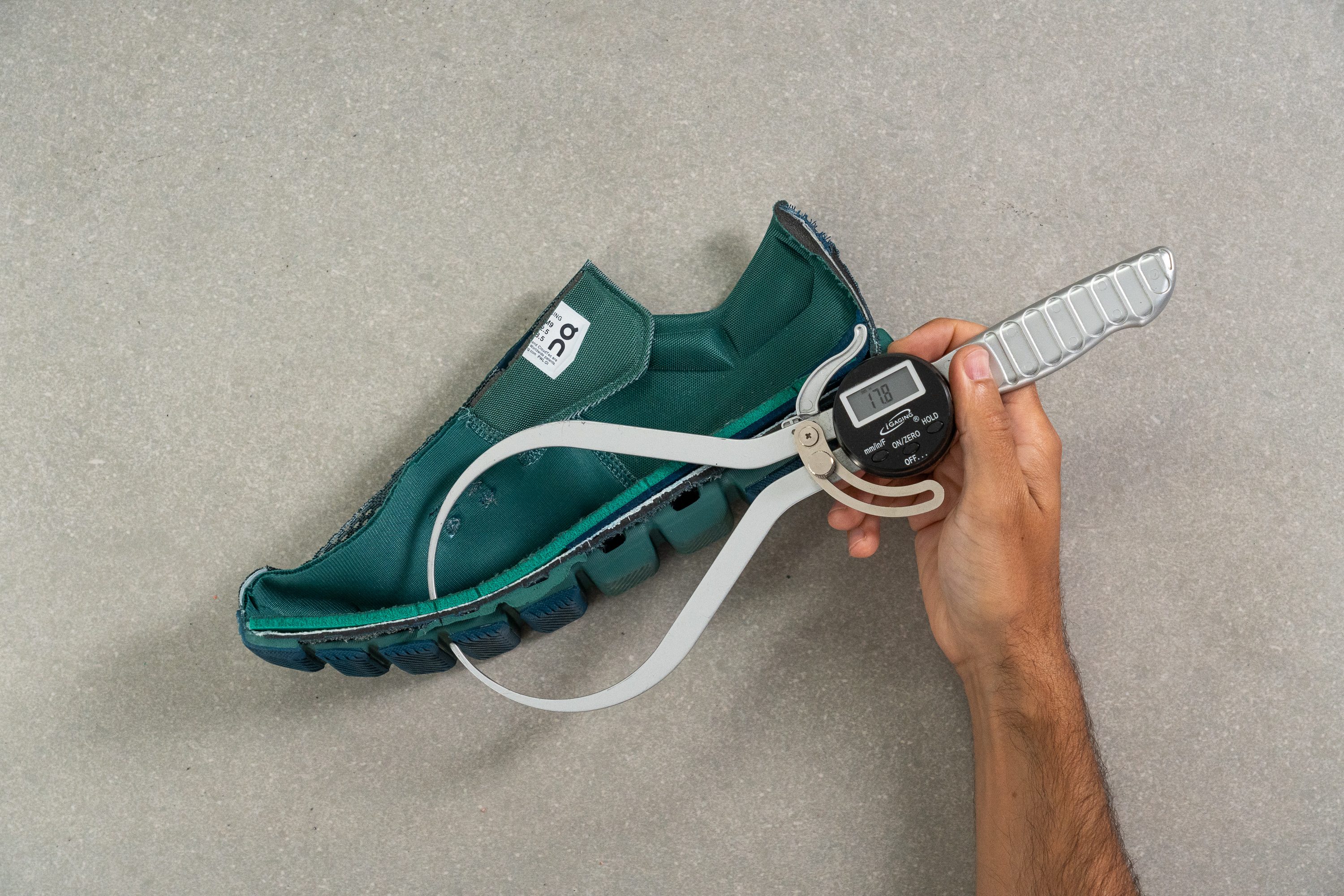
| Cloud X | 17.8 mm |
| Average | 24.9 mm |
Drop
On claims that this shoe has a 6-mm heel-to-toe drop, but our measurements tell a very different story: 10.1 mm.
This is a disappointing outcome that can make you think twice about this shoe if you were counting on a moderate drop. Instead, the actual drop is really steep, which can be problematic for some runners seeking a more balanced and natural stride.
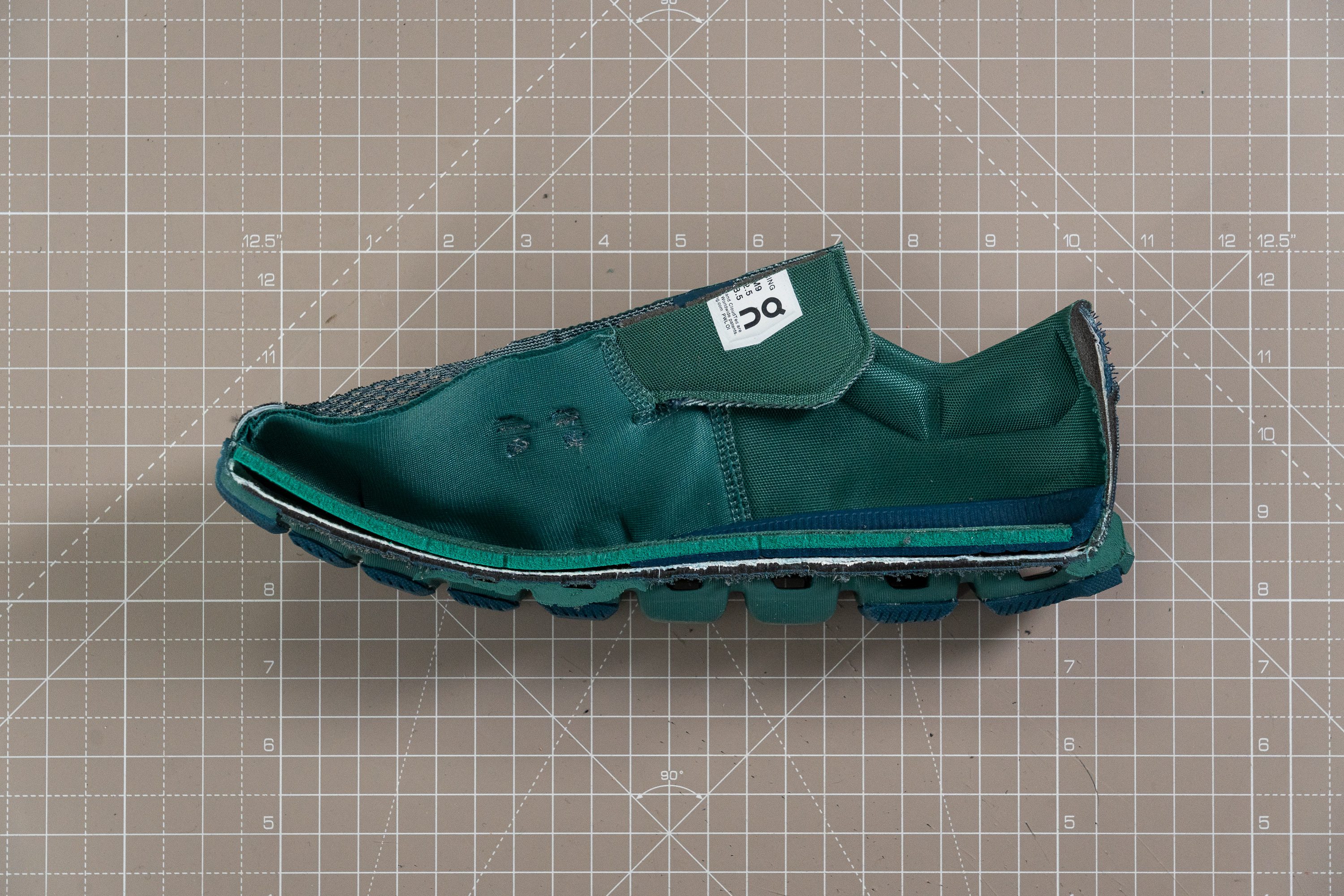
| Cloud X | 10.1 mm |
| Average | 8.7 mm |
Insole thickness
Inside the Cloud X, we found a pretty thick insole, likely trying to compensate for the lack of cushioning. We must acknowledge that it effectively fulfils that purpose.
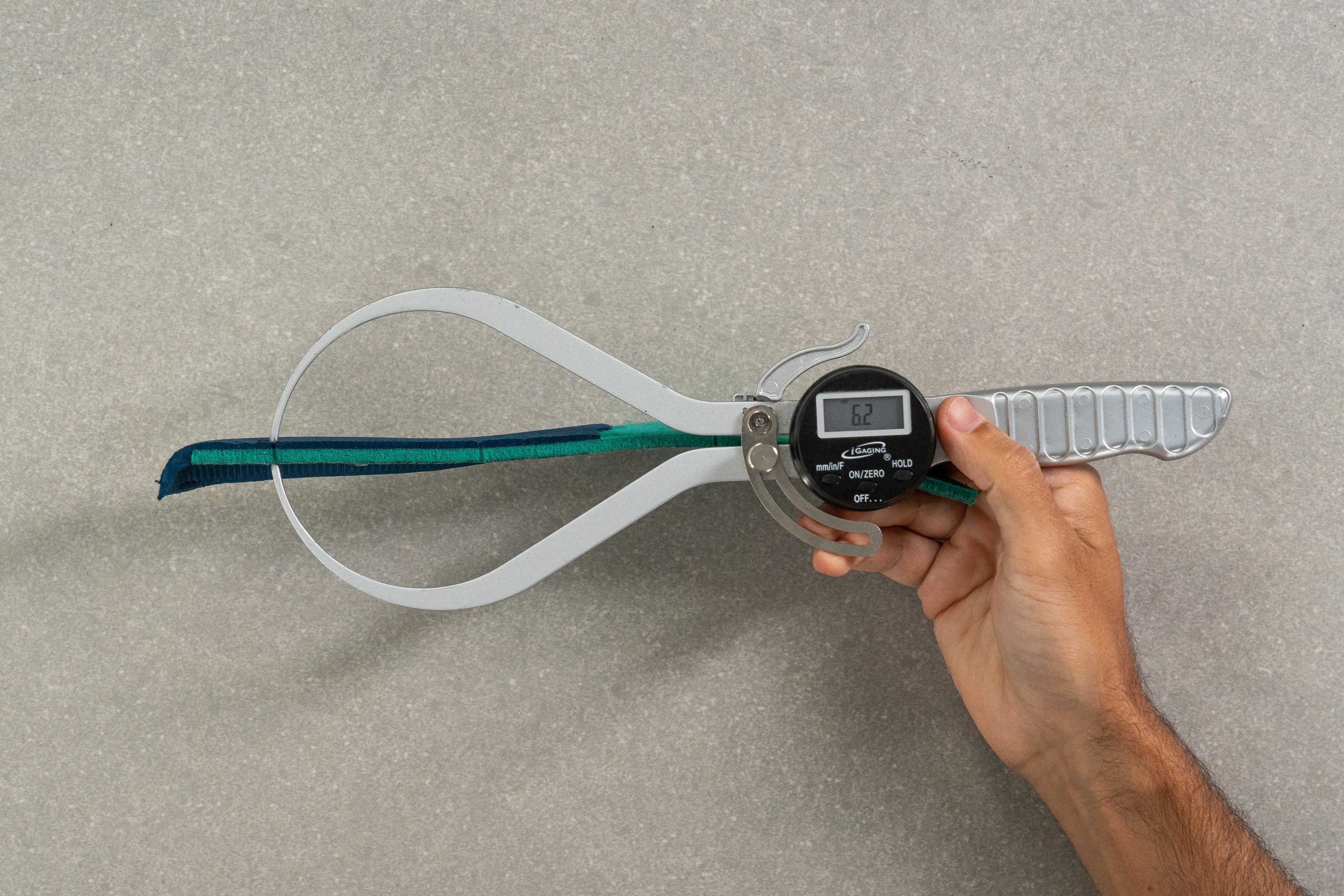
| Cloud X | 6.2 mm |
| Average | 4.5 mm |
Midsole softness
The Cloud X feels really firm from the moment you put them on your feet.
We were curious to quantify this feeling and compare it to other shoes in the market. The result was 33.5 HA, which is one of the firmest midsoles in the shelves.
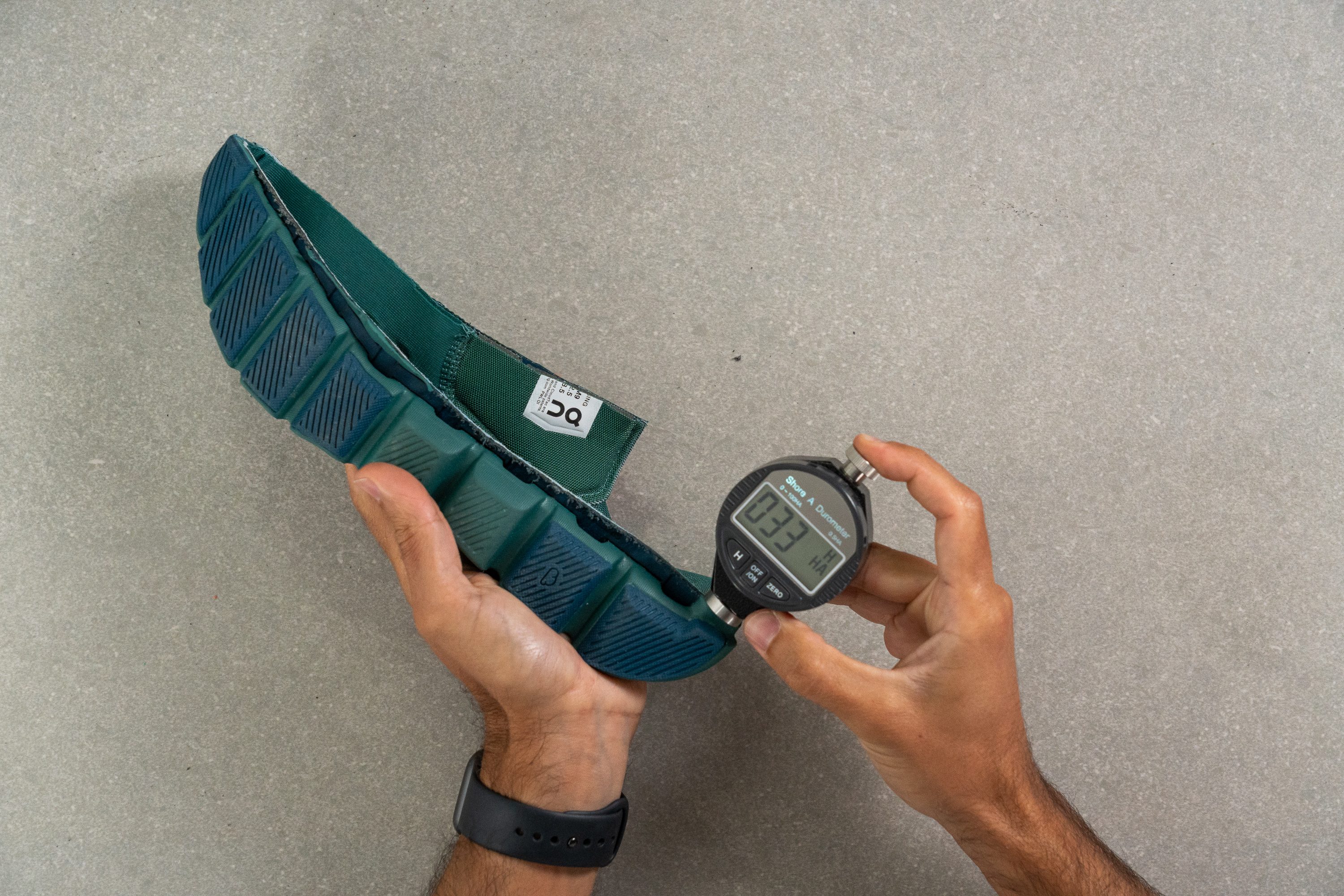
| Cloud X | 33.5 HA |
| Average | 21.4 HA |
And from our testing, we found its specifically tailored for those who love firm midsoles
After being exposed to 20 minutes of freezing temperatures, it becomes as hard as a brick, measuring at 40.4 HA.
The Helion midsole of this shoe is made from EVA + Olefin Block Co-polymers. Thanks to this combination, the midsole can withstand cold temperatures impressively well.
In fact, it experiences only a 20.6% change in softness, which is better than what we typically see in other shoes.
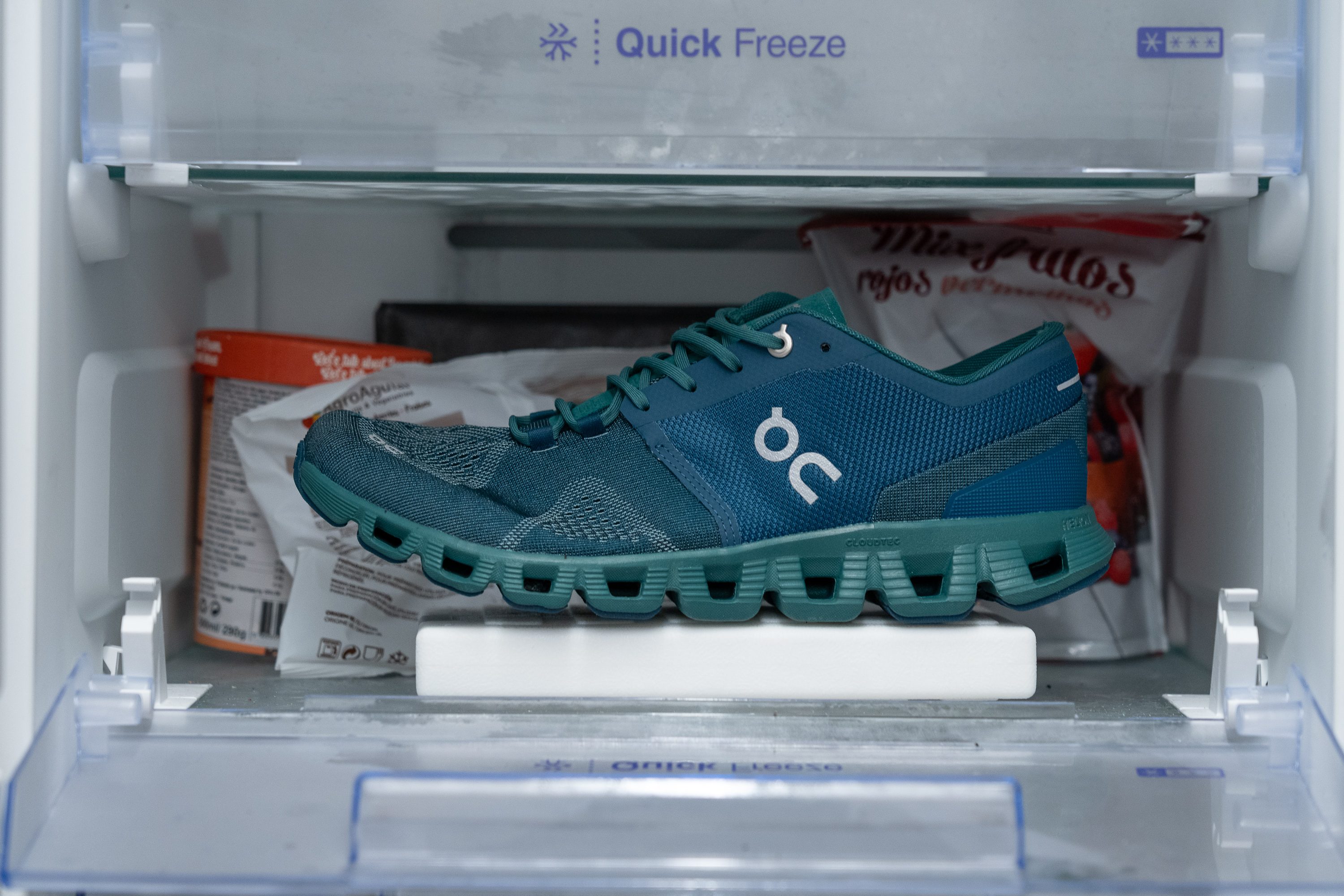
| Cloud X | 20.6% |
| Average | 25.6% |
Stability
Lateral stability test
When you get a thin and firm midsole, you naturally expect the shoe to be stable. Fortunately, that's exactly the case with the Cloud X.
It remains steady and doesn't wobble at any pace, making it a delight for fans of low-stack stable running shoes!
Torsional rigidity
On promotes the Cloud X as a versatile model capable of running, cross-training, walking, and even being used as a lifestyle shoe.
To achieve that versatility, it needs to be flexible both longitudinally and torsionally. Regarding the latter, we found it to be sufficiently flexible and rated it at 2/5. Great!
| Cloud X | 2 |
| Average | 3.2 |
Difference in midsole softness in cold
The same applies to the heel counter. It's not as hyper-flexible as the one you can find in racing shoes like the Adidas Adizero Adios Pro 3, but it's a bit firmer at 2/5, ensuring better lockdown without sacrificing comfort.
| Cloud X | 2 |
| Average | 2.8 |
Midsole width in the forefoot
On likes to create stable shoes, and one way they achieve that is by making the landing platform wider than the average shoe. That's exactly what they did with the Cloud X, as we measured the width of the forefoot at a broad 115.5 mm.
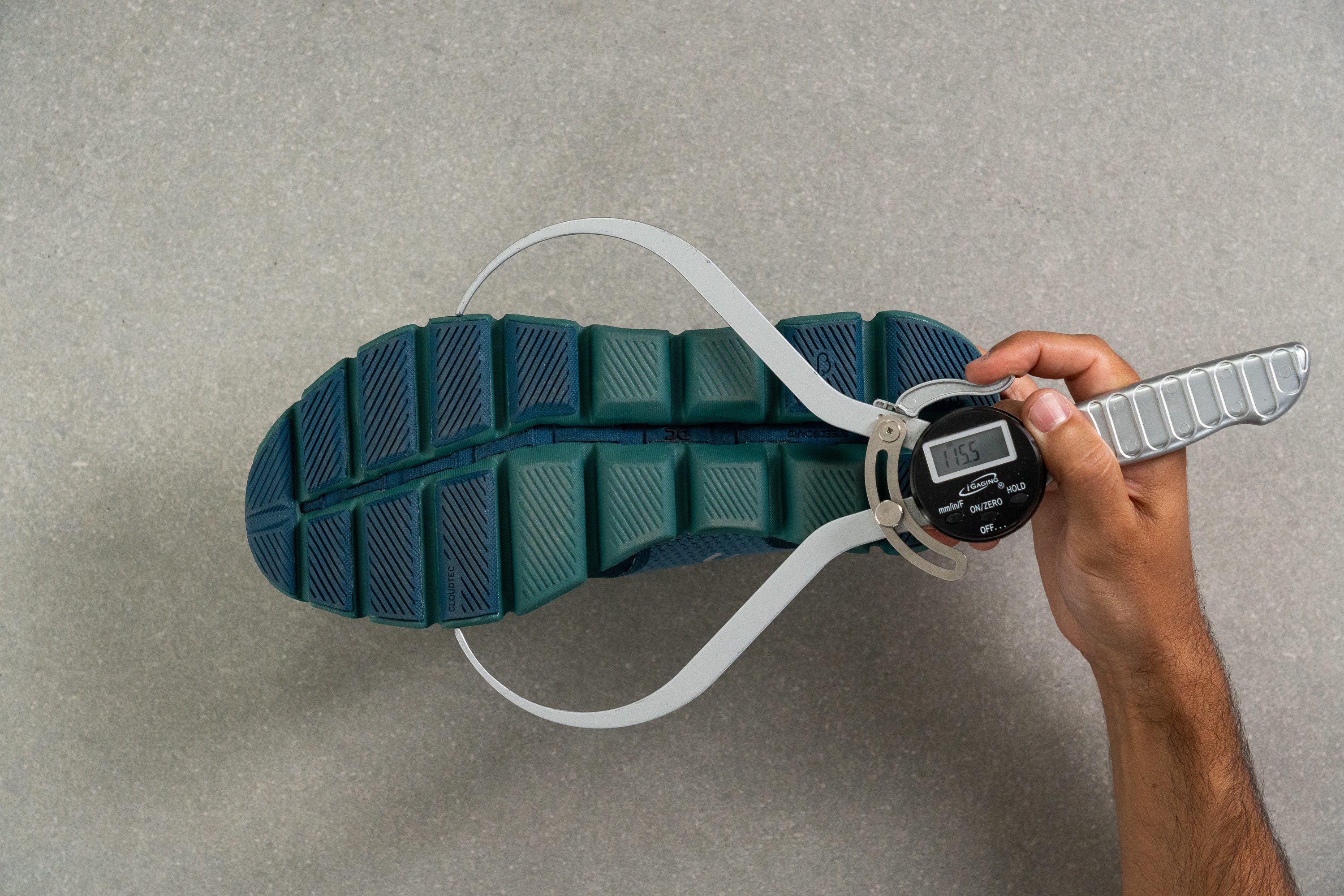
| Cloud X | 115.5 mm |
| Average | 113.7 mm |
but its a bit firmer at 2/5, ensuring better lockdown without sacrificing comfort
The heel also feels stable and is not narrow at all; however, we can't consider it wide. It's just average at 91.7 mm.

| Cloud X | 91.7 mm |
| Average | 90.4 mm |
Flexibility
Stiffness
For those seeking a flexible shoe, look no further. We only needed to produce 10.4N of force to bend it to 90 degrees, which is mind-blowing.
| Cloud X | 10.4N |
| Average | 29.1N |
Flexible and agile
When exposed to cold temperatures, it became stiffer, requiring 19.0N of our force to bend it to the same point.
That's an 82.7% increase, which is extremely disappointing when compared to almost any other running shoe.
| Cloud X | 82.7% |
| Average | 36.2% |
Size and fit
Internal length
With On designing the shoe as a versatile all-rounder, we anticipated it would comfortably accommodate wider fits. And it does!
Measuring at 102.7 mm, the shoe's upper provides ample room for nearly every foot shape.

| Cloud X | 264.9 mm |
| Average | 269.2 mm |
Toebox width at the widest part
With On designing the shoe as a versatile all-rounder, we anticipated it would comfortably accommodate wider fits. And it does!
Measuring at 102.7 mm, the shoe's upper provides ample room for nearly every foot shape.
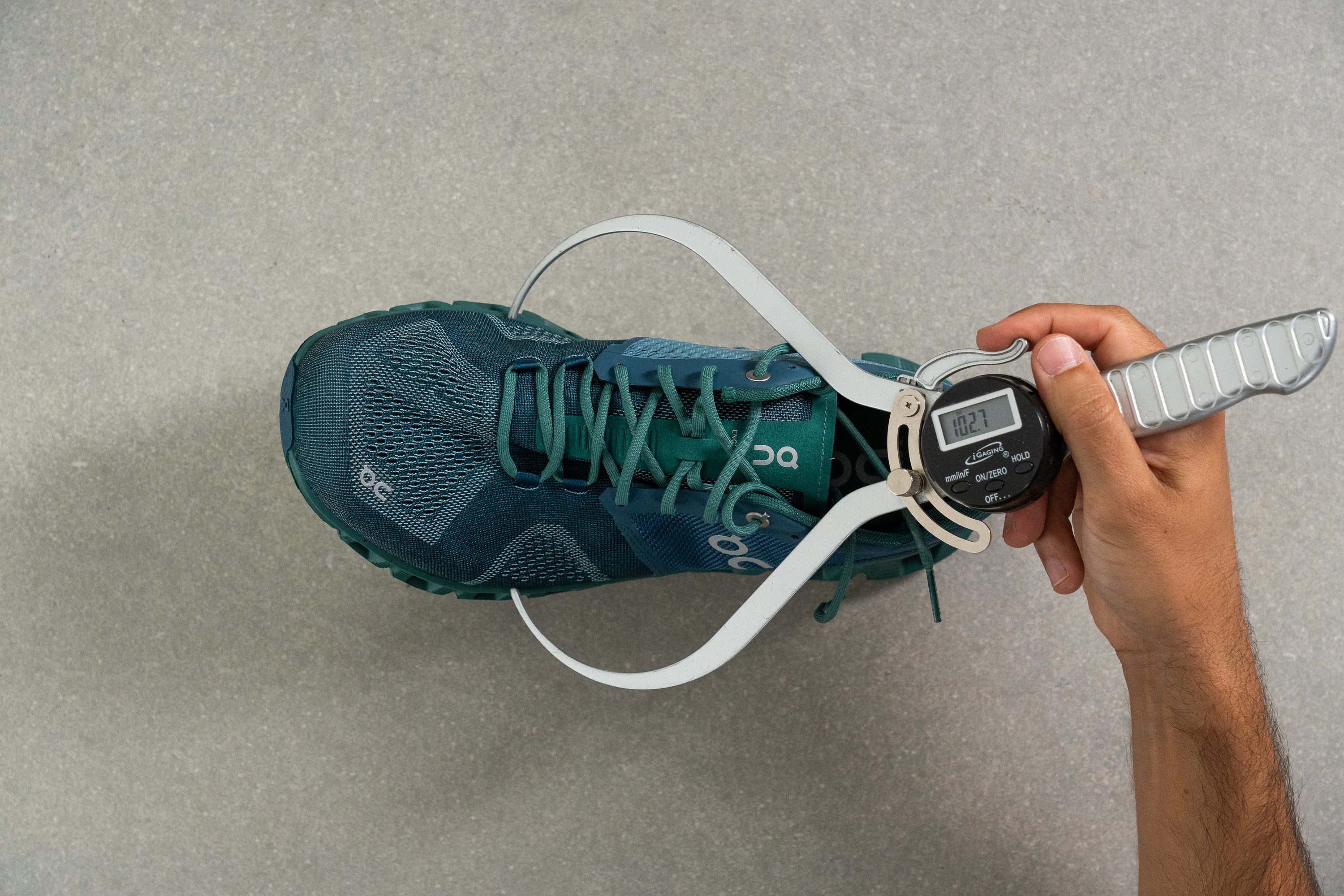
| Cloud X | 102.7 mm |
| Average | 98.4 mm |
Toebox width at the big toe
And it's not just the widest part of the shoe that impresses us, but also the toe cap. For those with square-shaped feet, the Cloud X emerges as one of the top choices on the market.
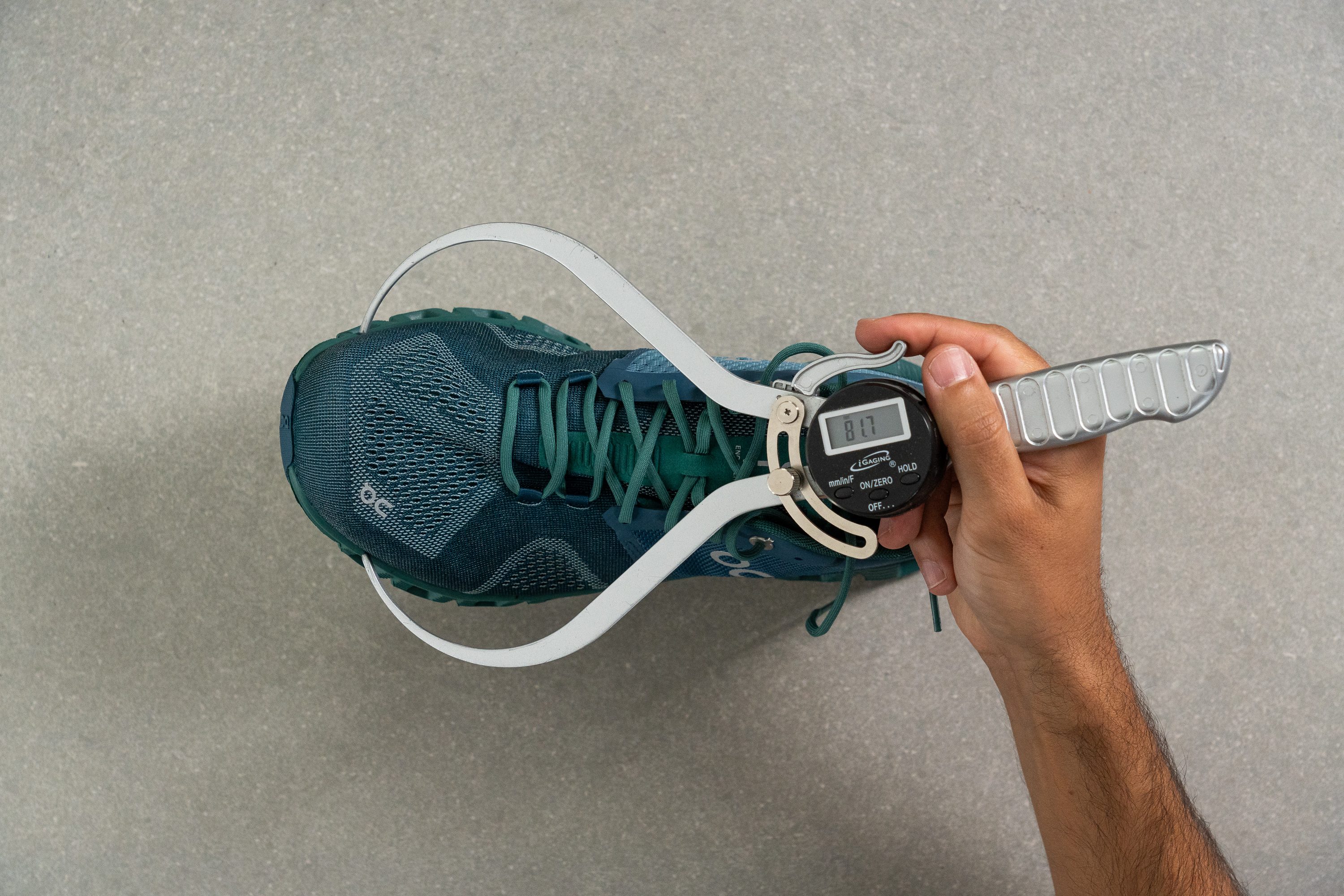
| Cloud X | 81.7 mm |
| Average | 78.2 mm |
Heel feel
The Difference in stiffness in cold boasts a dual-layer engineered mesh upper, identical to the On Cloudstratus. Midsole softness in cold.
This result is further validated in the subsequent test. Light passes through the upper with ease, despite its dual-layer design.
This is due to the inner layer being thinner than in other On models, which lets heat and moisture escape.

Observing this layer under our microscope reveals its construction. The captivating images it provides also clarify why this shoe breathes better than we initially anticipated.

Finally, it was time for us to go all in with upper. With it ripped from the shoe, we can easily see how it's constructed.
If On had opted for a single layer, the shoe might have scored a perfect 5 out of 5 in our tests. However, this would likely have affected both durability and comfort.
The Cloud X feels really firm from the moment you put them on your feet
Like most On shoes, this model also features a bootie-like tongue.
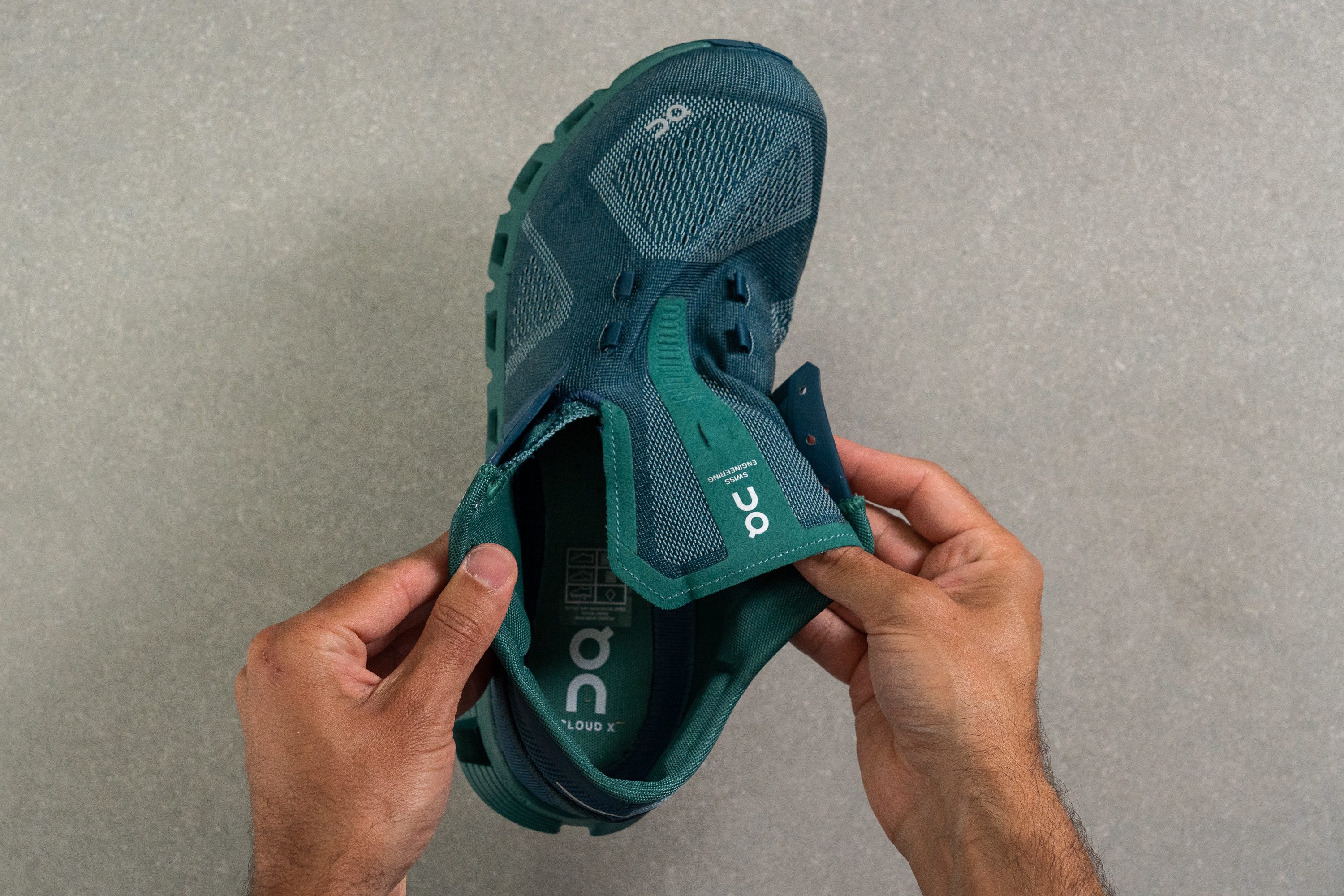
| Cloud X | Bootie |
Comfort
Tongue padding
On has designed this shoe with an emphasis on lightness, making a bulky, cushioned tongue impractical. They chose an average, balanced design instead, that we measured at 5.0 mm.
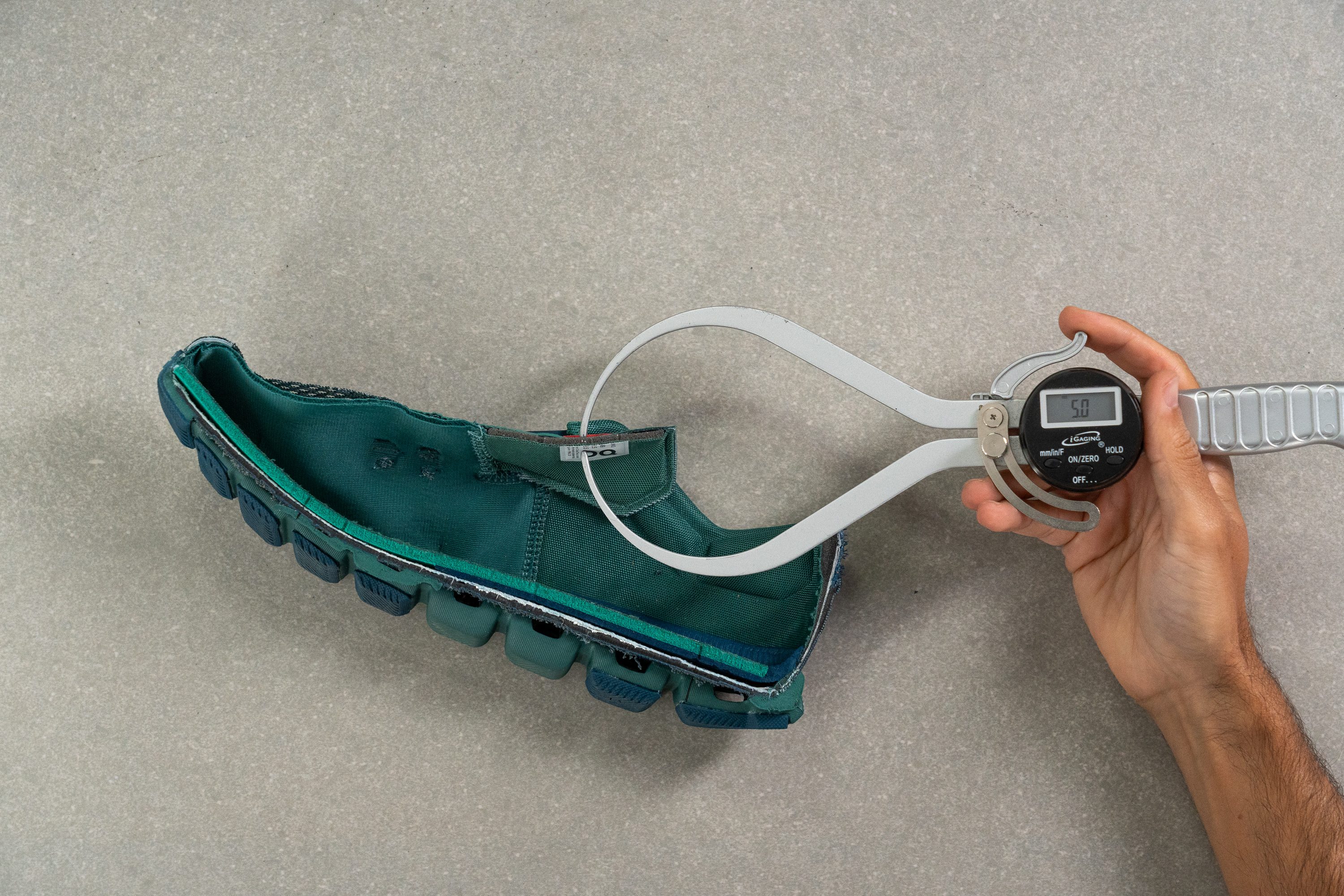
| Cloud X | 5.0 mm |
| Average | 5.6 mm |
Heel tab
Regrettably, this On shoe lacks a heel tab, even though we can't say we anticipated one. It seems that the Swiss designers don't love this feature at all!
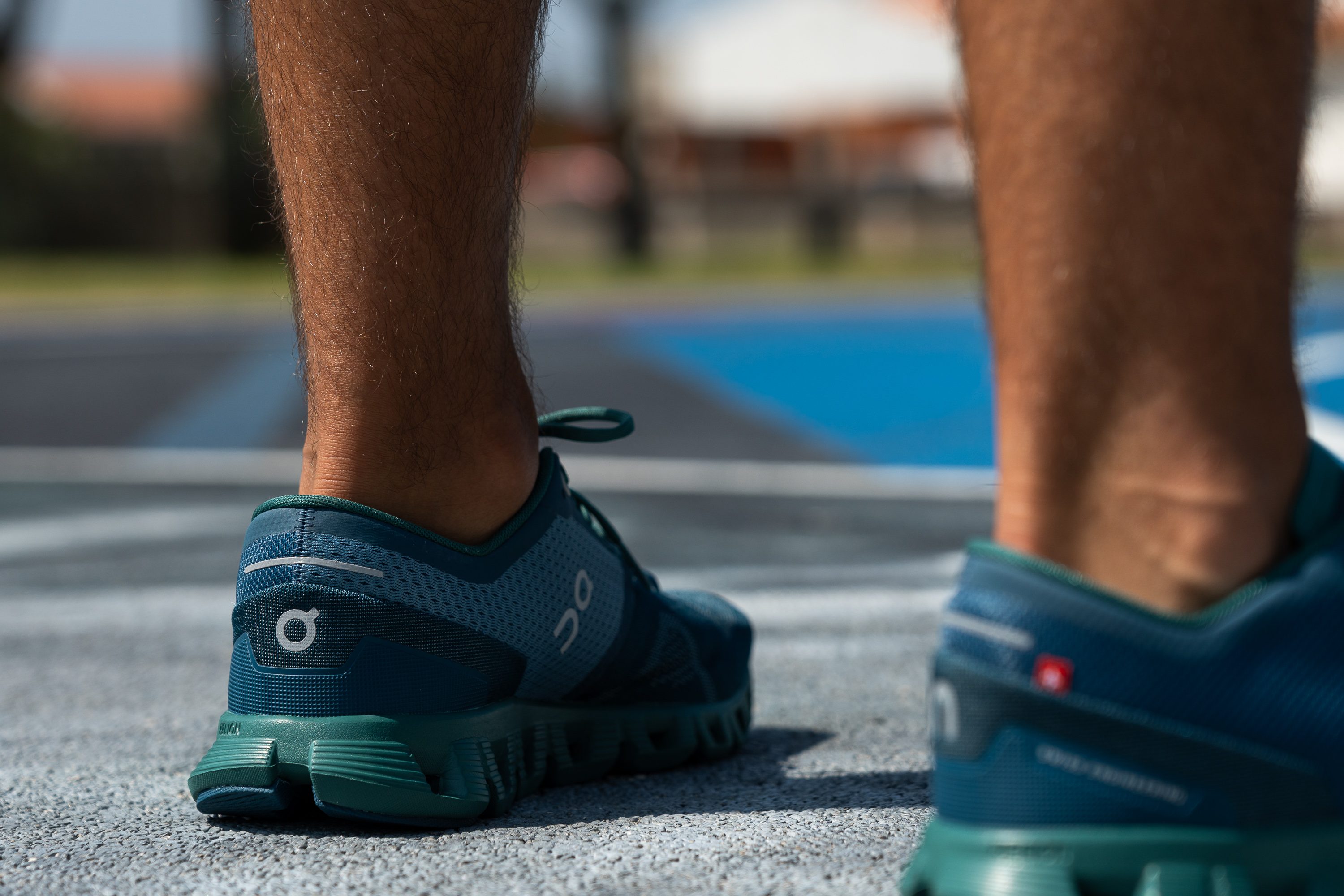
| Cloud X | None |
Removable insole
One great feature of this On shoe is the removable insole. We were able to replace the original with our own orthotics without any issue.
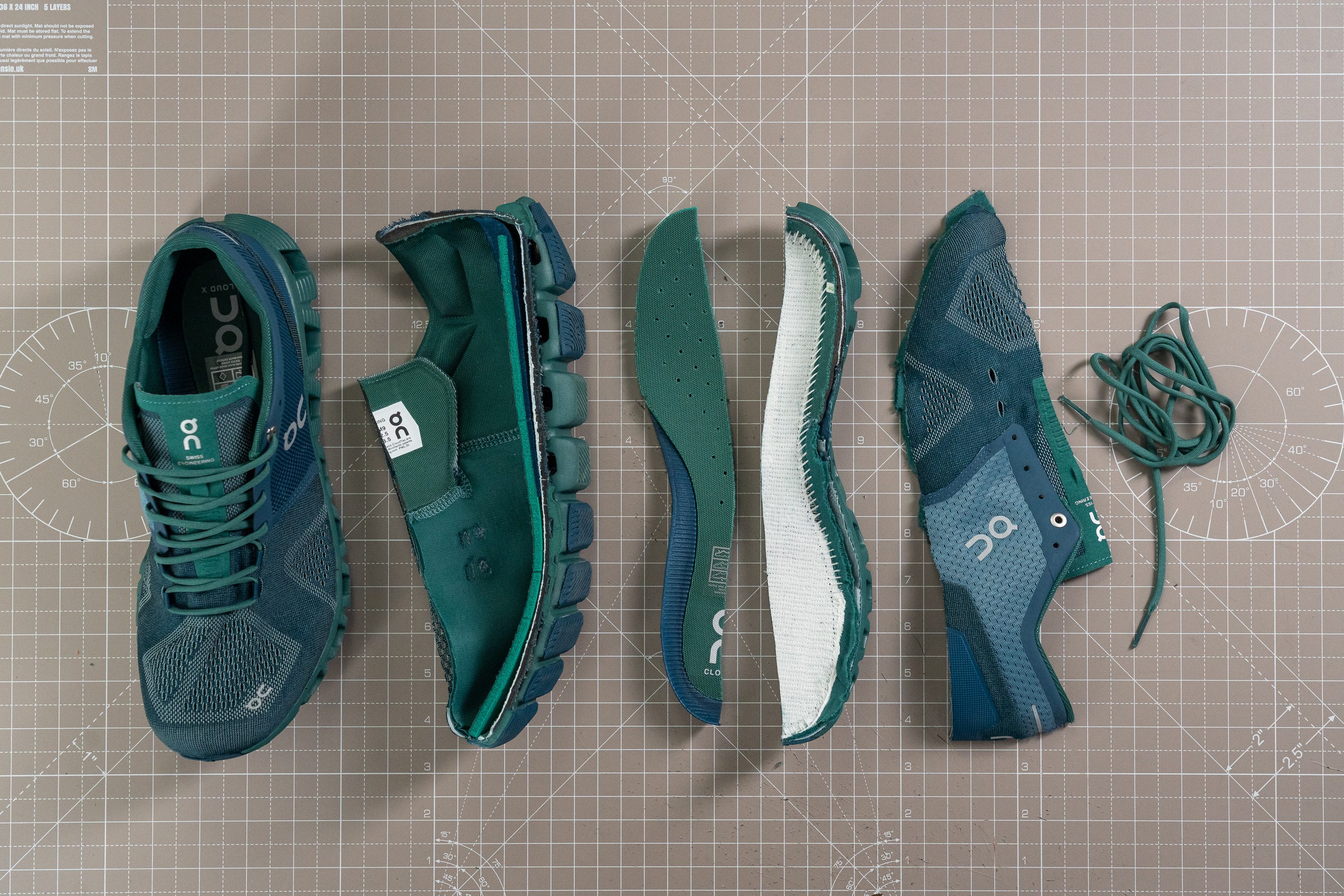
| Cloud X | Yes |
Misc
Reflective elements
This shoe surpasses at least 95% of the market in terms of reflective elements. Hats off to On for making safety a priority with their glowing logos!
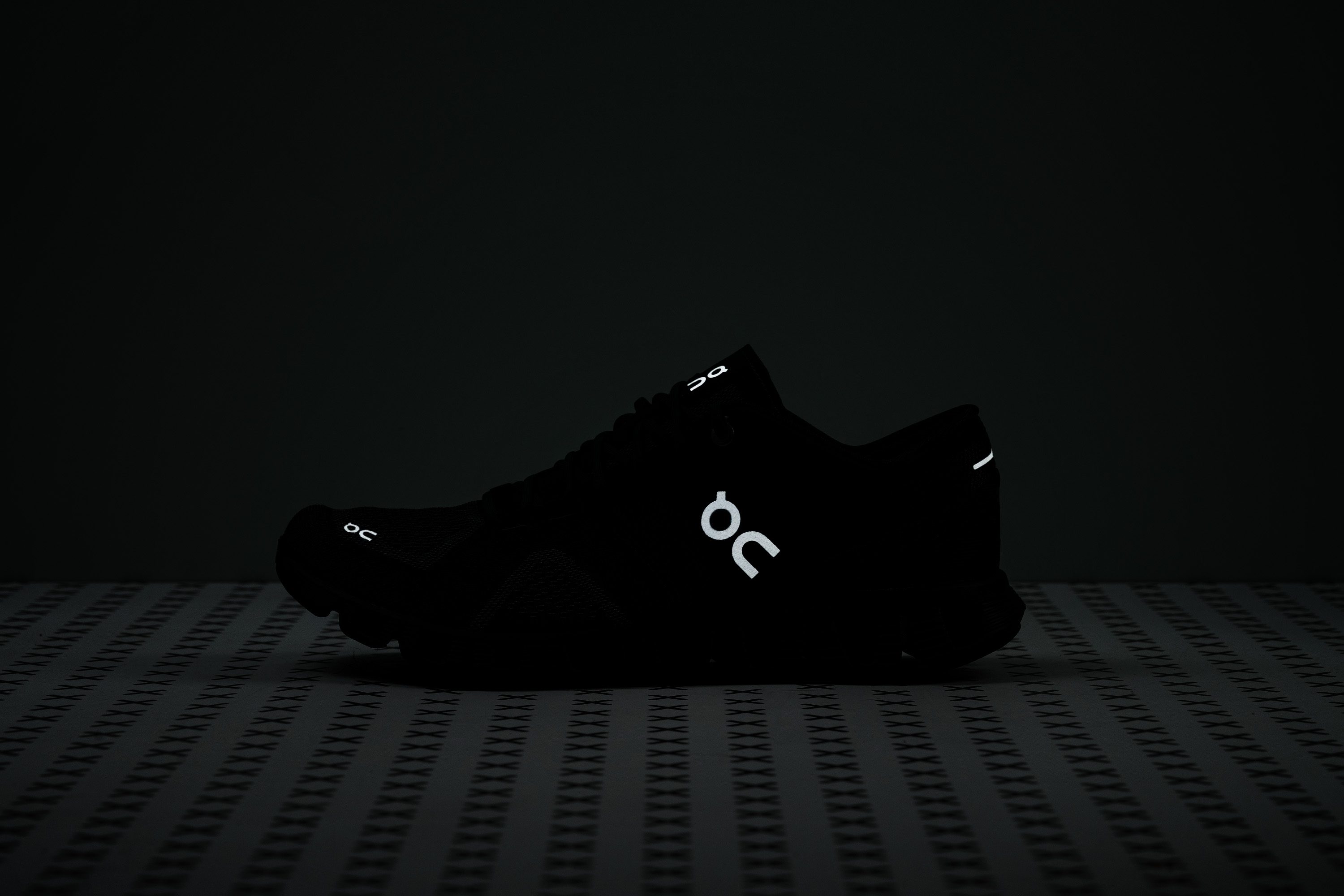
| Cloud X | Yes |

